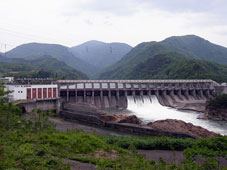Oct 25 2014
The intensified demand for electricity from renewable sources has kick-started the hydropower development into a new era: Following a period of a flattening trend, an unprecedented number of dams for electricity production is currently under construction or planned worldwide.
 Hydro electric power station. Photo: Yonezawa-Shi, Yamagata, Japan
Hydro electric power station. Photo: Yonezawa-Shi, Yamagata, Japan
However, the boom occurs primarily in developing countries and emerging economies in South America, Southeast Asia and Africa, that also hold some of the world’s most important sites for freshwater biodiversity.
“Hydropower is an integrated part of transitioning to renewable energy and currently the largest contributor of renewable electricity. However, it is vital that hydropower dams do not create a new problem for the biodiversity in the world’s freshwater systems, due to fragmentation and the expected changes in the flow and sediment regime. That is why we have compiled available data on future expected hydropower dams - to form a key foundation for evaluating where and how to build the dams and how to operate them sustainably”, says Prof. Dr. Christiane Zarfl (now Universität Tübingen) who, together with her colleagues, performed the study at the Leibniz-Institute of Freshwater Ecology and Inland Fisheries (IGB) in Berlin. She is presenting the database today at the congress Global Challenges: Achieving Sustainability.
Hydropower may double in electricity capacity
Renewables account for 20 percent of the global electricity production today, with hydropower contributing 80 percent of the total share. An expected 3700 major dams may more than double the total electricity capacity of hydropower to 1,700 GW within the next two decades.
Given that all planned dams are realized, China will remain the global leader in hydropower dam construction although their share of total future global hydropower production will decline from currently 31 to 25 percent, due to increases in other parts of the world.
The Amazon and La Plata basins in Brazil will have the largest total number of new dams in South America, whereas the Ganges-Brahmaputra basin (mainly India and Nepal) and the Yangtze basin in China will face the highest dam construction in Asia.
“When building new dams, it is important to follow a systematic management approach that considers the ecological, social, and economic consequences of multiple dams within a river basin”, says Prof. Dr. Klement Tockner, head of IGB, who is leading the Institute´s research activities on sustainable hydropower development.